This chicken recipe is my take on a classic Moroccan dish that’s usually prepared in a special covered clay pot called a tagine. I wish I owned one, but I don’t have the space to store it in my kitchen so instead I make do with a heavy covered skillet or dutch oven. Traditional recipes call for the use of preserved lemons here, but I know they’re not a staple in everyone’s pantry so we’re using my beloved seasonal Meyer lemons instead (which, by the way, I often use to make my own preserved lemons). If you don’t have access to Meyer lemon I suggest using one lemon and one orange for this recipe. Since Meyer lemon is believed to be a hybrid of regular lemon and mandarin orange it will give you a close approximation of the flavor. As for the chicken, I highly recommend using bone-in, skin-on pieces for optimal flavor and tenderness.
The recipe is loaded with fragrant spices and just a hint of heat from cayenne. Please don’t be overwhelmed by the long spice list – it’s worth it to use all of them. You can even make a big batch of the mixture to keep on hand for future use. It’s fantastic with chickpeas, rice, quinoa, and even tofu.
The floral and mildly acidic Meyer lemons, briny olives, sweet carrots and dried fruit harmonize beautifully with the warm spices, and it all comes together surprisingly easily into a hearty and memorable dish. The rich, piquant sauce is begging to be soaked up with rice, couscous or roasted potatoes, so I suggest serving it with something along those lines to round out the meal. My personal favorite accompaniment is a pilaf made with rice or grain-free cauliflower couscous that’s seasoned with turmeric, cumin and cinnamon, and tossed with dried currants and toasted sliced almonds.
This is one of those dishes that tastes just as good if not better the next day, so I always make the full 4 servings even if it’s just for me. Hooray for leftovers! The recipe also doubles easily, though you may have to cook it in two separate vessels depending on size. One final ingredient note – I typically use homemade chicken stock that doesn’t contain salt. If you’re cooking with salted stock, cut back on the added salt in the recipe (I’d reduce the salt in the rub by ½ teaspoon and reduce or omit the ½ teaspoon that gets added when you cook the onions). Now let’s get cooking.
Quick lesson in case you didn’t know this: take a look at the halved onion in the photo. See how I cut out a v-shaped divot at the blossom (top) end? That’s because I cut the onion into sauté slices and I don’t want the tough stem to end up in my dish. Sauté slices are cut lengthwise along the onion from stem to root (end to end). You should always slice onions this way for sautéing because they’re more uniform in size and shape to allow for even cooking. If you cut the onion crosswise around its “equator,” those are known as salad slices and result in a wide variation in half-moon sizes Fine for salads or pickles, not so great for cooking. Got it?
Rub the chicken liberally with the spice mix. You want the pieces coated thoroughly like the ones above. At this point you’ll let the chicken sit for at least an hour. If you’re going to be cooking it right away you can leave the chicken at room temperature, which will also allow for easier browning in the pan. (Cold meat + hot pan = drop in temperature, less browning, and more sticking.) If the chicken is going to be sitting for more than an hour before cooking, refrigerate it for the sake of safety.
You don’t have to use different colored carrots in your dish, I just happened to have some yellow ones on hand to use up. I use a “roll cut” on mine which is ideal for braised and stewed dishes when you want pieces that are substantial and pretty uniform in size and thickness. (If you’re not sure how to do a roll cut you can find videos on YouTube that show you how to do it Alternatively just cut the carrots into thick slices or chunks.) See how the lemons are sliced nice and thin? You want them about ⅛ inch thick or thinner so they really soften and almost fall apart in the sauce. Look at the diced apricots in the photo as well – they should be mostly the same size, and relatively small. Those are small dice (¼-inch square), and I think it’s the ideal size here. They distribute evenly throughout the sauce for a consistent, mild sweetness and you’re not biting into big chunks of fruit.
When you brown the chicken pieces you should start with one tablespoon of oil and a hot pan. If the skin is browned properly it will render out enough fat to brown the remaining pieces so you don’t have to add more oil to the pan. See how evenly browned and crisp that skin looks? That exactly what you want. Don’t try to cram or crowd too many pieces into the pan or you’ll end up with soggy, flabby, steamed chicken that looks nothing like the photo.
Once you’ve browned all the chicken pieces, sauté the onion and garlic with some salt (only use a pinch if the chicken stock you’re adding later is salted). They’ll pick up the fat and spices that were left behind in the pan from browning the chicken and turn this lovely golden color. You only need to cook the onion and garlic long enough to soften a bit – about 3 minutes at most. Once you’ve done that, lay the chicken pieces on this bed of onion. (Keeping the onion on the bottom of the pan allows it to soak up some of the moisture and flavor from the chicken while preventing it from sticking to the bottom.) Cover the pan and cook the chicken with the onion on medium-low heat for 15 minutes before adding the remaining ingredients.
Here’s how it looks after cooking for another 30 minutes once all the ingredients were added. At this point if the carrots are too al dente for you, remove the chicken to a platter and tent it with foil to keep warm, then cover the pan and simmer the vegetables and sauce for another 5-10 minutes until the carrots reach your desired level of tenderness.
Now the only thing left to do is add your chopped herbs and dig in!
- For Spice Rub
- 2 tsp sweet paprika
- 2 tsp turmeric powder
- 1 tsp ground cumin
- 1 ½ tsp ground coriander
- 1 tsp ground ginger
- 1 tsp cinnamon
- ½ tsp ground cardamom
- ½ tsp freshly ground black pepper
- 1 tsp kosher or sea salt
- ¼ tsp ground clove
- ¼ tsp freshly grated nutmeg
- ¼ tsp cayenne
- Remaining Ingredients
- 15-30 ml (1-2 Tbsp) coconut or olive oil
- 3-4 lbs assorted bone-in, skin-on chicken pieces
- 1 large red onion (about 12 oz), thinly sliced
- 1 Tbsp minced garlic
- ½ tsp salt
- 2 Meyer lemons* (4-5 oz each), thinly sliced - aim for ⅛ inch or thinner
- 210 grams (1 ½ cups) pitted green olives (halved if desired)
- 65-70 grams unsulphured dried apricots or pitted dates, diced (½ cup)
- 8 oz carrots (peeled if not organic), cut into ½ -inch chunks
- 120 to 180 ml (½ to ¾ cup) salt-free chicken stock**
- 3 Tbsp finely chopped fresh cilantro
- 3 Tbsp finely chopped fresh flat-leaf parsley
- Combine all spices - paprika through cayenne - in a large bowl or heavy ziploc bag. Pat chicken pieces dry, and rub thoroughly with spice mixture. Let stand for at least one hour and up to overnight in the spice rub. (If only marinating for one hour you can leave the chicken at room temperature, otherwise refrigerate until ready to cook.)
- In a large heavy skillet or dutch oven, heat 1 tablespoon oil over medium high heat. Place 3-4 chicken pieces skin side down in the pan, and cook for 3-4 minutes, shaking the pan occasionally, until the skin begins to crisp and brown. Flip pieces over and cook for another 2-3 minutes. (If spices look or smell like they're burning, decrease heat to medium.) Remove to a bowl or plate and repeat with remaining chicken, adding the extra tablespoon of oil if necessary - you may not need it if the first batch of chicken renders out enough fat from the skin. Keep all browned chicken pieces together in a bowl or on a plate while you proceed with the next step.
- Decrease the heat to medium-low and add the onions, garlic and ½ teaspoon salt to the pan (omit or reduce salt if your chicken stock isn’t salt-free). Sauté for 2-3 minutes until slightly softened and fragrant. Lay the chicken pieces on top of the vegetables - it’s okay if the pieces overlap now - cover the pan, and cook for 15 minutes.
- Add the lemon slices, olives, apricots/dates and carrots, arranging everything around the chicken pieces. Add enough stock to cover the bottom of the pan by about ¼ inch and bring to a simmer on medium heat. Reduce heat to low, cover, and cook for an additional 30 minutes until the chicken is tender and cooked through.
- If you discover that the carrots aren’t cooked enough for your liking at this point, remove the chicken to a platter and tent with foil to keep it warm. Cover the pot and simmer the carrots for another 5 minutes until they’re completely tender.
- Mix in fresh parsley and cilantro right before serving. Adjust salt to taste if desired, and serve with rice pilaf, couscous, quinoa or roasted potatoes to soak up the delicious sauce. (For a grain-free option I love to serve this with a cauliflower “couscous” pilaf studded with currants and toasted sliced almonds.)
**If your chicken stock is salted, omit or reduce the ½ teaspoon salt that gets added to the onion during cooking.
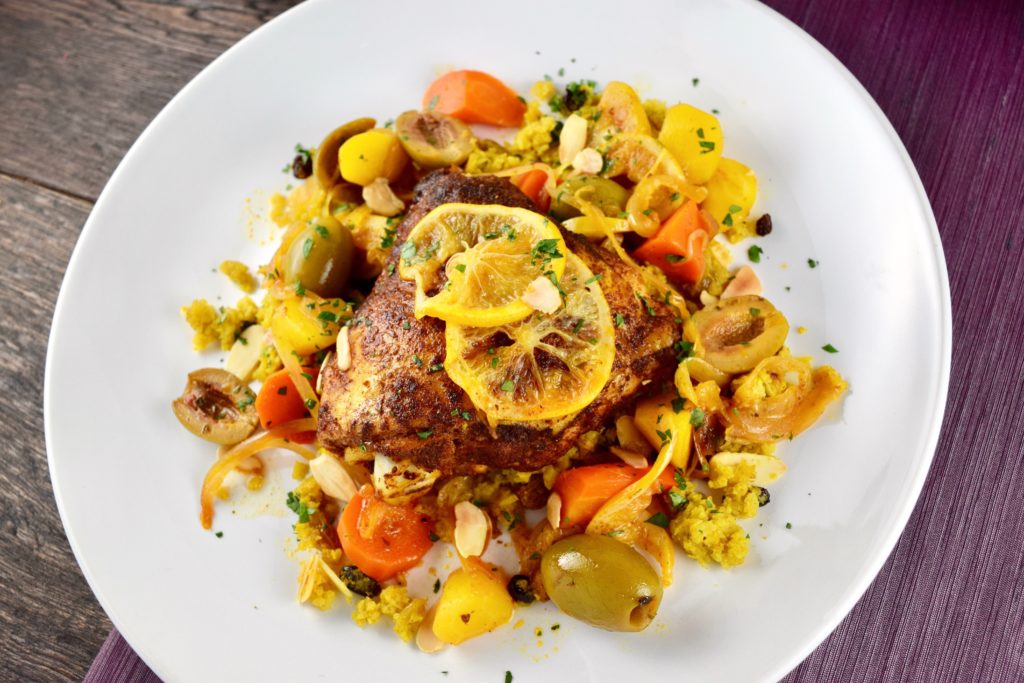
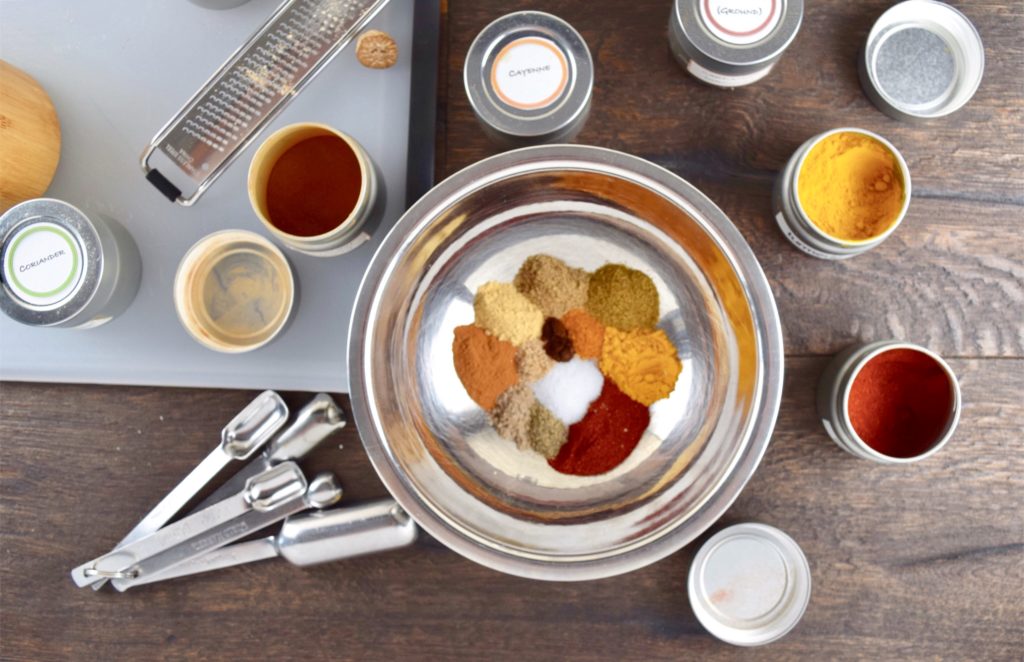
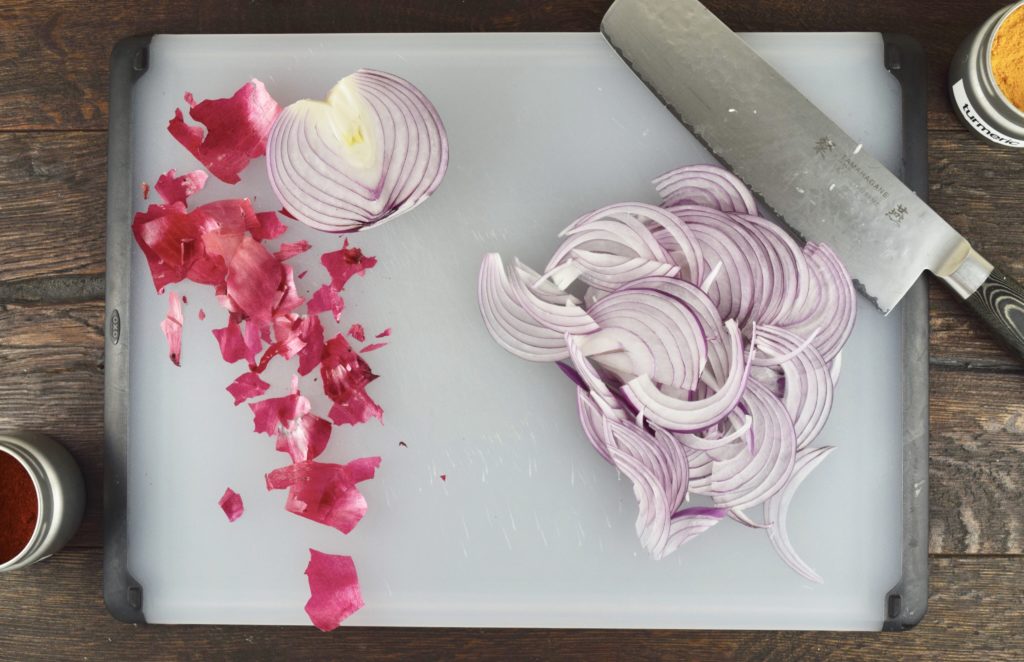
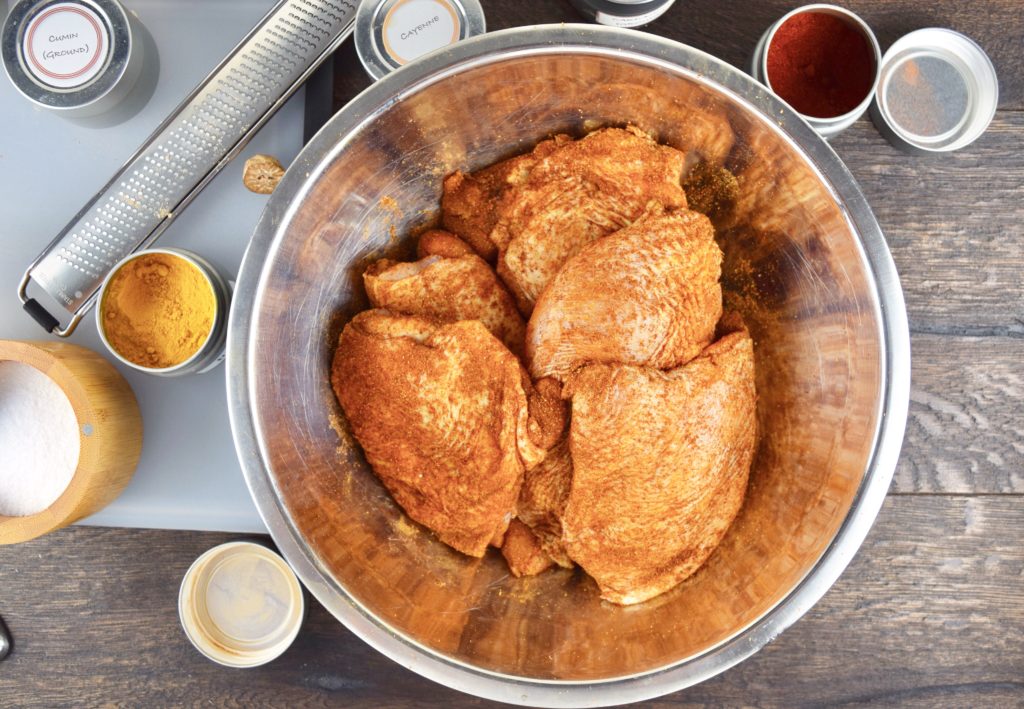
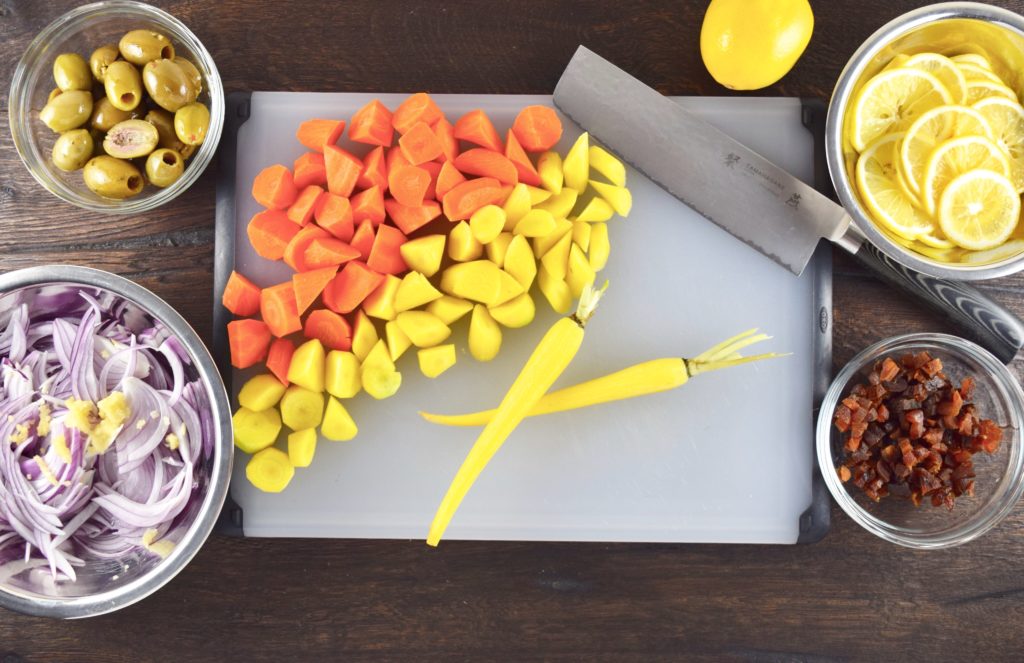
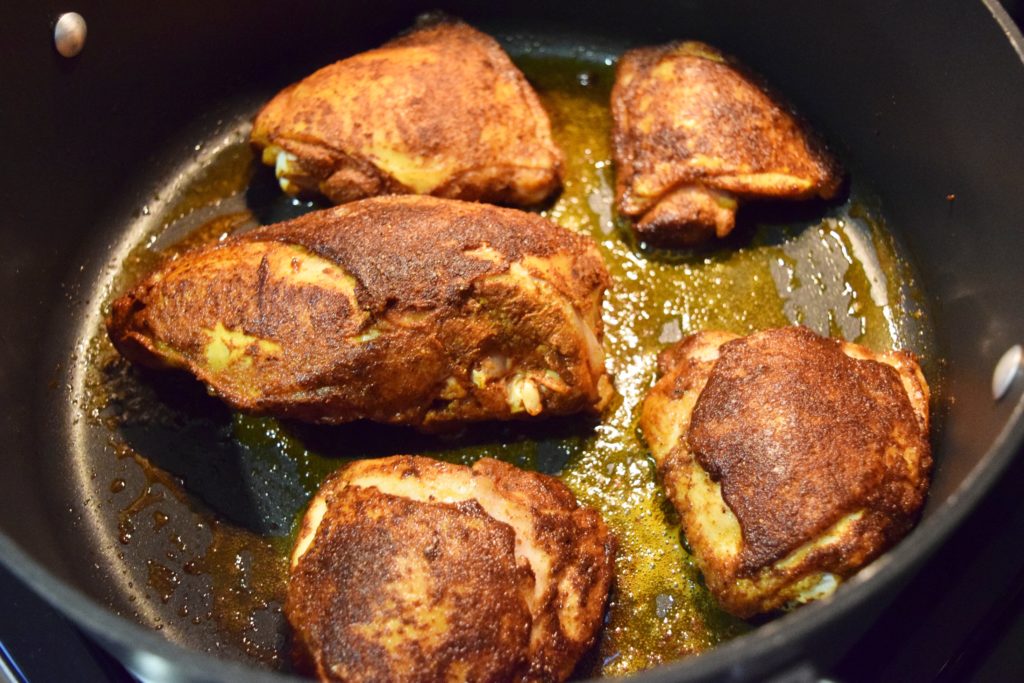
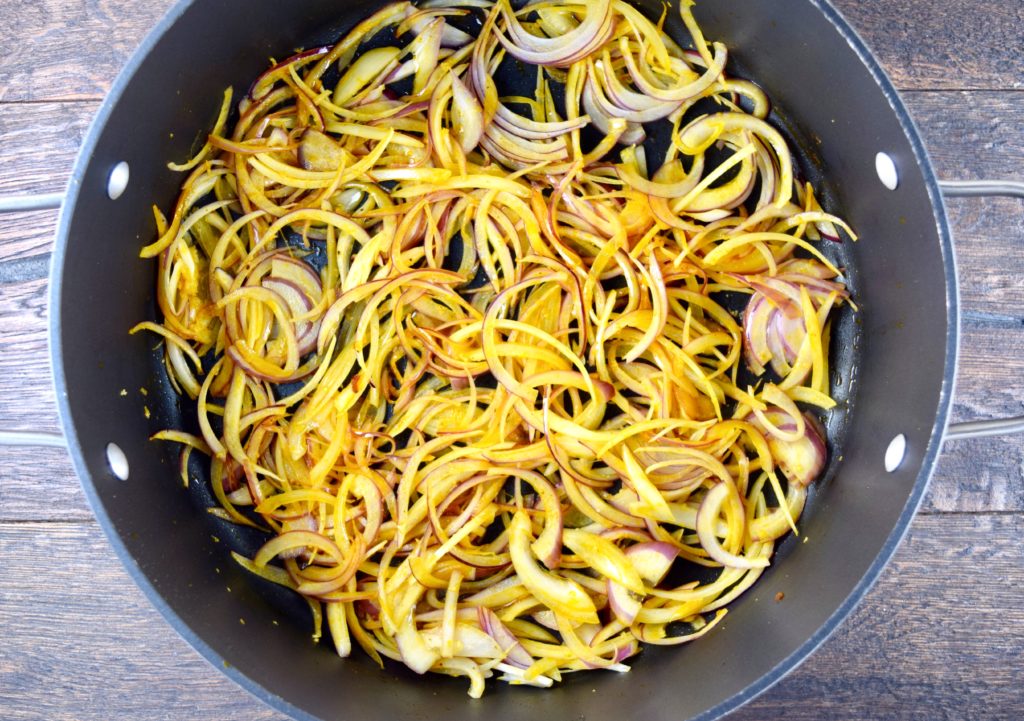
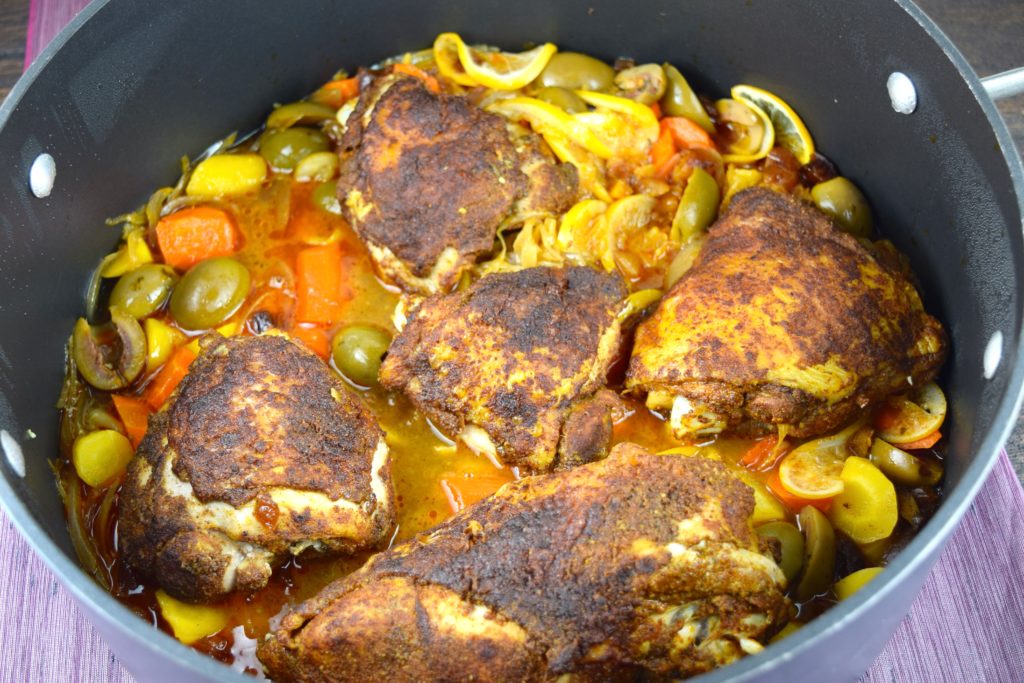
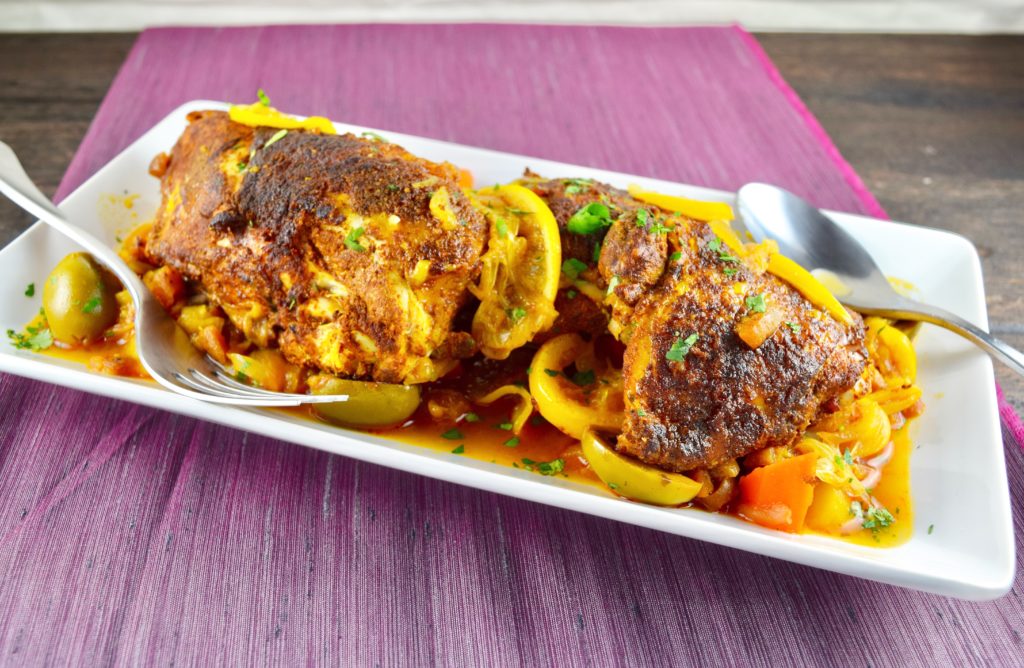
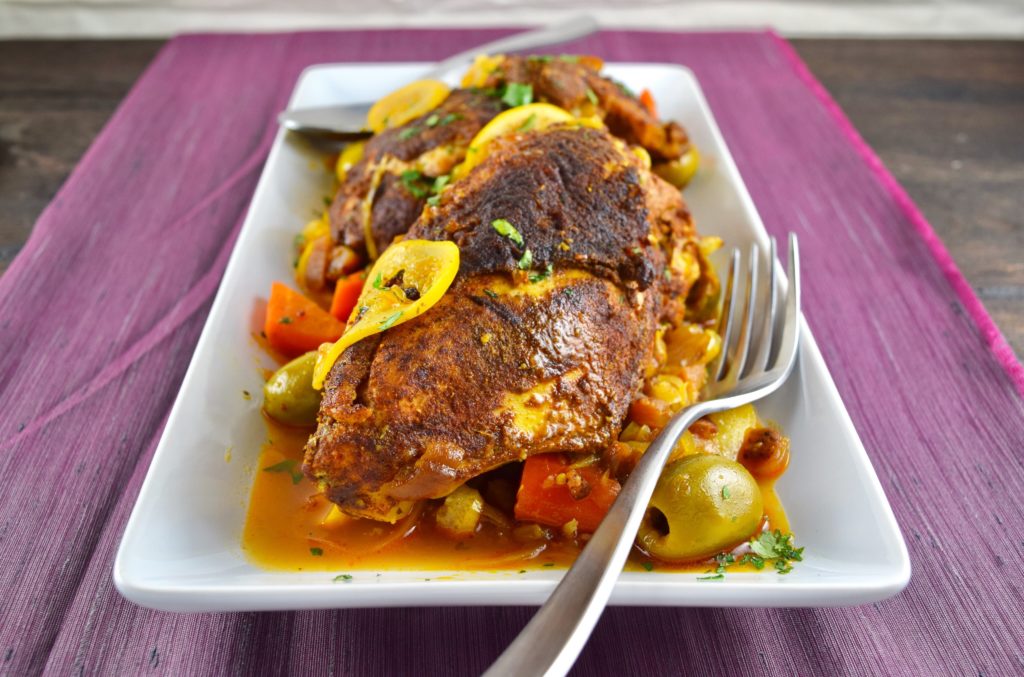
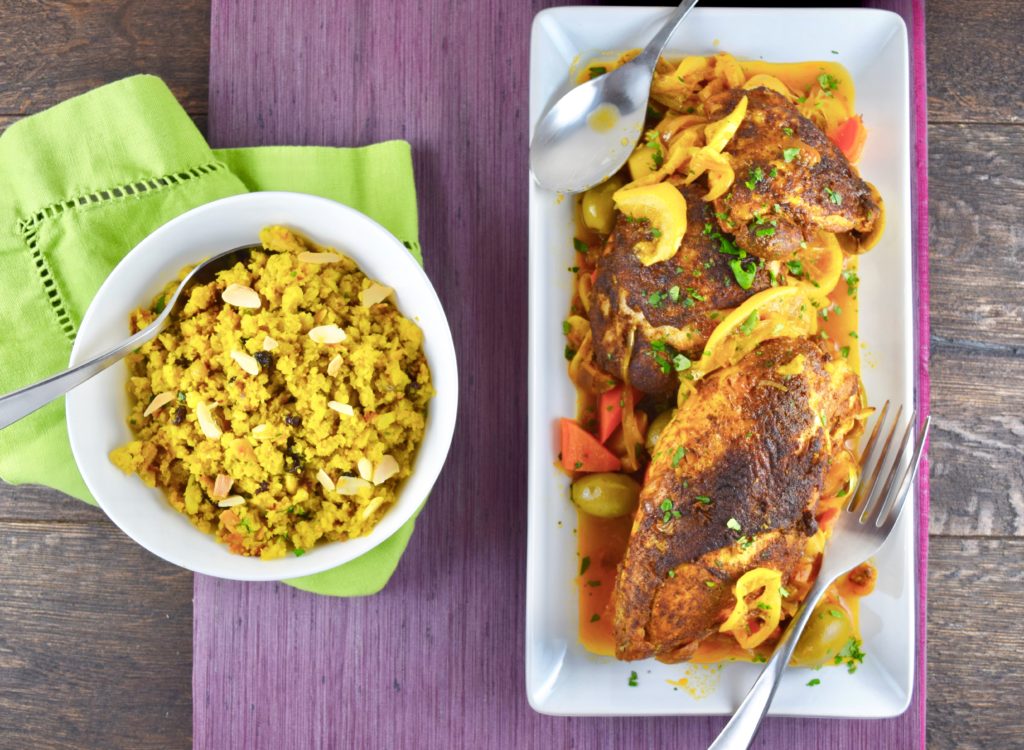


This was delightful! My market no longer has Meyer lemons, so I did the lemon/orange sub, and I really enjoyed the contrast between bites as I ate. The spice rub is really well-balanced – I can easily overdose on cinnamon and nutmeg in savory dishes, but this hit a good savory note.
Thanks for the comment, Beth! I’m so glad you enjoyed it, and hopefully you’ll make it again when Meyers are in season.